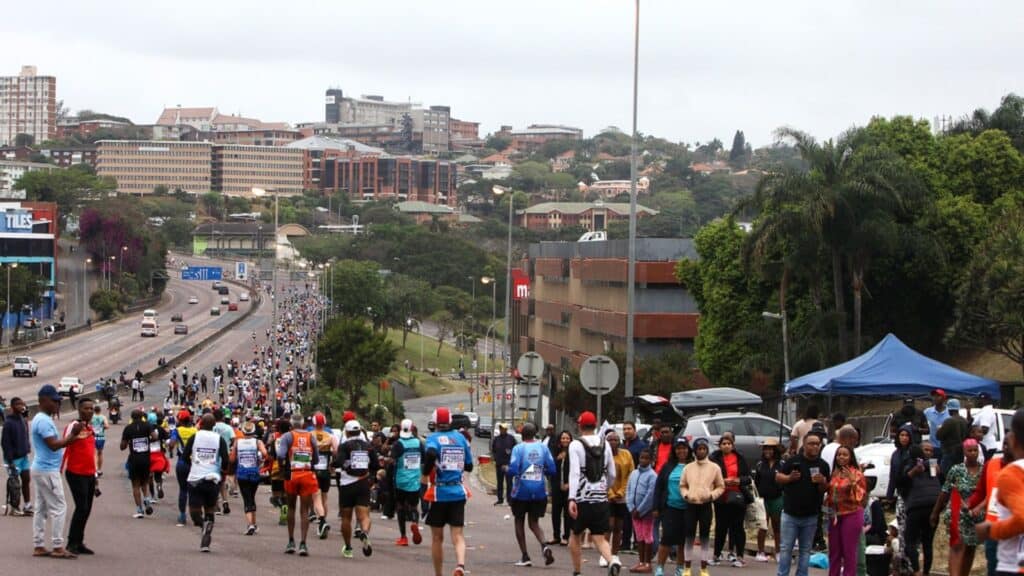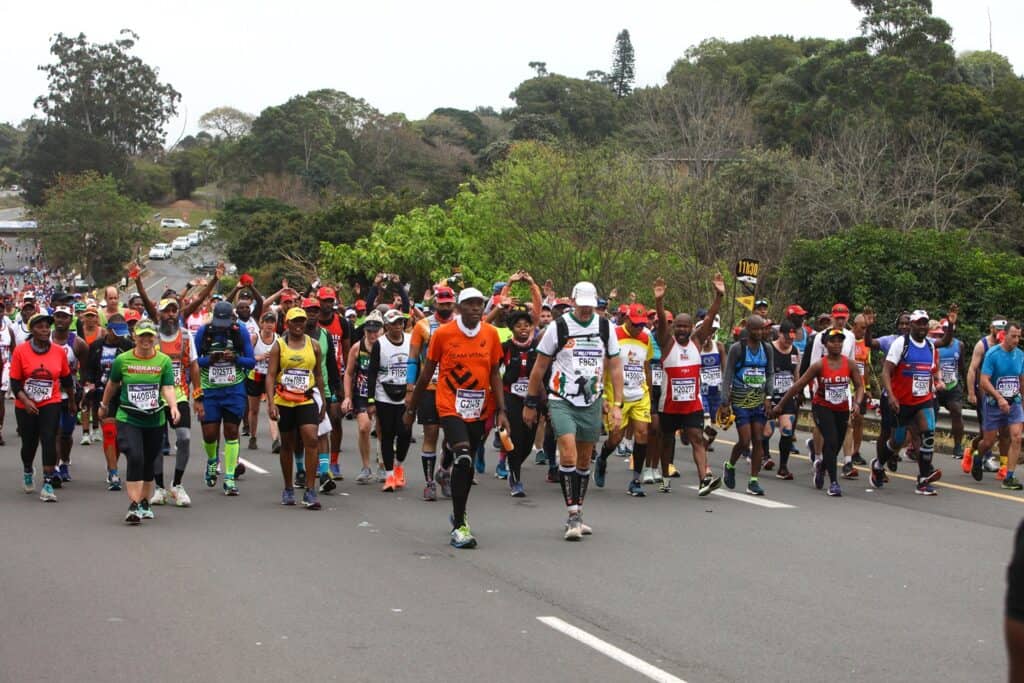In this article, we will provide valuable insights and expert advice on optimizing performance and managing challenges in preparation for the Comrades Marathon.
From mastering the tapering process and incorporating the run/walk strategy to understanding discomfort and minimizing the risk of illness, discover key strategies to enhance your training, mental resilience, and overall readiness for the race.

Mastering the Tapering Strategy for the Comrades Marathon
With the highly anticipated Comrades Marathon just a few weeks away, runners are entering a critical phase in their training known as tapering. This period is crucial for optimizing performance and ensuring that athletes arrive at the starting line feeling fresh and prepared. In this section, we will explore expert advice on how to approach the tapering process effectively.
Understanding the Tapering Process:
During the tapering period, runners must strike a balance between maintaining fitness levels and allowing the body to recover adequately before race day. The goal is to gradually reduce training volume and intensity while addressing any minor discomfort or injuries.
The Weeks Leading Up to the Taper:
In the weeks preceding the taper, athletes should maintain their regular training routine, including speed work, hill training, strength exercises, and overall training volume. This phase aims to ensure runners are in peak condition and free from any major issues.
Entering the Taper Phase:
As the final weeks approach, the tapering process begins. It is recommended to reduce the training load by approximately 50% compared to the previous week. For example, if a runner typically engages in an hour-long easy run, they should aim for around half an hour during the taper. Similarly, the number of repetitions for intense exercises should be halved.
Weekend Runs during the Taper:
During the taper, the focus shifts to shorter distances for weekend runs. It is advisable to limit runs to a maximum of 20-22 kilometers, equivalent to a half marathon, for individuals following the Finishers Programmes. Those aiming for a Silver finish should target around 25 kilometers. These reduced distances help maintain fitness while allowing the body to recover and conserve energy for the upcoming marathon.
The Final Week:
In the last week leading up to the Comrades Marathon, runners should maintain their regular training schedule but with reduced intensity. Start with 20-40 minutes of easy running at the beginning of the week, gradually decreasing the duration to a maximum of 15-20 minutes by the end of the week. Consistency in running days is essential to ensure a light and comfortable feeling on race day.
Tapering is a crucial phase in preparing for the Comrades Marathon. By gradually reducing training volume and intensity, runners can optimize their performance and increase their chances of achieving personal goals. Use this time to fine-tune your preparation and allow your body to recover adequately.
Incorporating the Run/Walk Strategy for a Successful Comrades Marathon
The run/walk strategy has become a popular approach for achieving different medals in the Comrades Marathon. We explore the question of when to implement the run/walk strategy for those targeting a bronze medal or any other medal.
The Importance of Starting Early:
It is crucial to begin incorporating the run/walk strategy right from the start of the race. The late Dave Spence, former coach for the Two Oceans marathon, emphasized the concept of starting to walk before it becomes necessary.

Why is this necessary?
By starting to incorporate walk breaks early on, runners can avoid reaching a point where they are forced to walk for prolonged periods. Walking slowly and struggling to transition back into running can be demotivating and challenging.
Establishing a Habit:
Beginning the race with purposeful, brisk walk breaks helps to establish a habit. As the race progresses and participants reach the 60-70km mark, the walk breaks become a routine. Even though the pace of walking may slow down, runners are mentally prepared for the walk to end and for running to resume.
Ensure your success with our step-by-step, proven Comrades Marathon training system…
Maintaining Leg Freshness:
By implementing the run/walk strategy early in the race, runners can maintain a level of freshness in their legs for a longer duration. This approach prevents excessive fatigue and allows for more sustainable performance throughout the marathon.
For those aiming for a bronze medal or any other Comrades Marathon medal, incorporating the run/walk strategy from the beginning of the race is highly recommended. By starting with purposeful walk breaks, creating a habit, and maintaining leg freshness, runners can optimize their performance and increase their chances of achieving their medal goals.
The Reality of Pain:
The uniqueness of the Comrades Marathon lies in its toughness and the physical obstacles it presents. Venturing beyond the marathon distance inevitably leads to tired and sore legs. Many participants aiming for various medals, including the coveted silver, often underestimate the level of discomfort they will encounter during the race.
Preparing for Discomfort:
Long training runs, particularly those surpassing 40 kilometers, play a vital role. They condition the legs to maintain a reasonable pace even when experiencing discomfort and fatigue. By exposing the legs to these challenging conditions during training, runners gradually adapt and build resilience to the discomfort that accompanies longer distances.
The Role of Tapering:
An essential advantage during the race is the tapering phase, allowing the body to recover and rejuvenate. This results in fresher legs on race day, postponing the onset of soreness and fatigue. The psychological boost of feeling physically prepared contributes to mental fortitude.
Managing Discomfort:
It is crucial to acknowledge that discomfort will arise during the Comrades Marathon. Typically, it becomes more pronounced around the 60-65 kilometer mark. This is when mental strength becomes paramount. By accepting the discomfort and persevering, runners can push through and ultimately achieve their goal of crossing the finish line.
Experiencing discomfort and leg pain during longer distances is an inherent part of the Comrades Marathon. Recognizing and accepting this reality is crucial for participants preparing for the race. Gradually adapting to discomfort during training, optimizing the tapering phase, and cultivating mental resilience are key strategies to successfully overcome challenges and complete the Comrades Marathon.

Managing Soreness and Avoiding Illness Before the Comrades Marathon
As the Comrades Marathon approaches, participants may experience feelings of soreness and tenderness. In this next section, we address a listener’s concerns regarding these sensations and offer recommendations for managing discomfort and minimizing the risk of illness during this critical training period.
Dealing with Soreness:
Feeling sore and tired during the final stages of training is normal for Comrades Marathon participants. However, it is crucial to listen to your body. If soreness persists, it is a sign that you may need to ease off and prioritize recovery. Adjusting the tapering phase to include a more aggressive recovery week followed by gradual reintroduction of training can help alleviate soreness and ensure optimal readiness for the race.
Protecting Against Illness:
In the current climate, it is natural to be cautious about potential exposure to illness, especially with flu symptoms circulating. Increasing your intake of vitamins, particularly vitamin C, and considering supplements such as magnesium and Vitamin B can support your immune system. Additionally, consuming foods rich in antioxidants and nutrients helps maintain a healthy gut and respiratory system. Regular hand hygiene, either through wet wipes or frequent handwashing, reduces the risk of transferring germs from surfaces to your face and mouth.
Experiencing soreness and being mindful of illness are common concerns leading up to the Comrades Marathon. By adjusting your tapering strategy to prioritize recovery and listening to your body’s signals, you can alleviate soreness and optimize your performance. Taking proactive measures to strengthen your immune system, such as increasing vitamin intake and maintaining good hygiene practices, helps minimize the risk of falling ill before the race. Stay focused, take care of your well-being, and approach the final weeks of training with confidence.



Comments are closed.